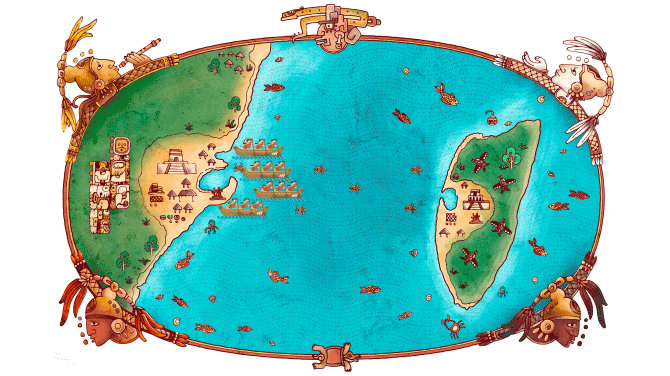Ancient Route
Sacred Journey Route

XCARET - CHANKANAAB - XCARET
The evidence shows that the commercial port of Polé, which we know today as Xcaret, was the main departure point for the communities of the Ekab region on the pilgrimage to Kuzamil, nowadays Cozumel. The Sacred Journey route recreates year after year a ceremony that begins with a farewell ceremony to godspeed the brave oarsmen and women, who start a trip to the Ixchel Sanctuary with the first ray of sun.

The importance of the Caribbean Sea in the Sacred Journey
For the pre-Columbian civilization who inhabited these places, the Caribbean Sea had great relevance as a source of food and a means of transportation, besides pointing the entrance to the Xibalbá or underworld, having a simile in the cenotes as a gateway. The Sacred Journey also represents the transition to the afterlife in the continuous cycle of life.


XCARET TRADE PORT


COZUMEL IN ANCIENT TIME

XAMANHÁ (PLAYA DEL CARMEN) AND THE NATIVE CULTURE
Another departure point for the pilgrimages to pay tribute to Ixchel could have been Xamanhá, which we now know as Playa del Carmen. With the decline of the civilization that inhabited this region and the arrival of the Spanish expeditions, Xamanhá remained uninhabited until it re-emerged as a small fishing village in the early 20th Century.


Receive promotions and news from Xcaret to enjoy on your next vacation.
